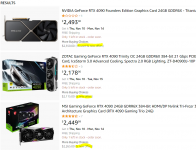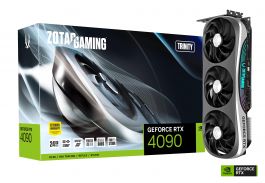And now AMD's Frank Azor said in an interview they are aiming to compete with the RTX4080. And given AMDs price, I wouldn't be surprised if the 7900XTX is trading blows depending on the game.
If you figure that AMD will ask as much as they think they'll get for the quantity of cards they're planning on producing - we can estimate performance pretty well.
So yeah, ~4080 16GB level.
They're also still behind in RT performance, and FSR is still trailing DLSS in their respective best implementations, and that's leaving DLSS 3.0 off the table, that's one feature most folks aren't really sold on for very obvious reasons.
But, where AMD is picking up is in the 'other than games' segment. Disappointing for those that only care about gaming performance, and even perhaps specific games at specific resolutions and specific levels of performance, yet still a pretty big step forward for propelling them to greater mindshare and hopefully better marketshare - all while pushing their competitors to do even better in return.
Not only does AMD have AV1 transcoding done in hardware, but they also have the software side working pretty well too, as well as good support for content creation applications from Adobe. Mind you, personally I've avoided AMD for content creation and my primary laptop and desktop after having had to pull an AMD GPU out of my wife's computer and replace it with a slower Nvidia GPU
just to get Photoshop stable. And every release since, I've heard at least a few reviewers mention weird stability issues, whether talking about the discrete GPUs or the APUs.
AMD was confident enough in their unveiling conference to outright tout support for Adobe apps, and to me, this is a big step forward. I think it will be for most others that see GPUs as perhaps five-year investments, starting life in a gaming machine or workstation (or hybrid), and then moving on to secondary systems and perhaps serving their last years in say servers or spare systems. For those that sell their GPUs, this isn't as big of a deal obviously, but it is something that has kept many folks solidly in the Nvidia camp for their primary GPU purchases.
Also, it's obvious that AMD didn't really design in a performance margin for the release RX7000 GPUs to be able to compete with Nvidia's top-end. However, it does look like AMD is targeting higher-end buyers with a balanced product that in all likelihood will look good on the performance charts and even better on the efficiency charts.
I expect this generation to be more competitive as more cards release, and I look forward to David, Brent, and Rick giving them a proper shakedown!


